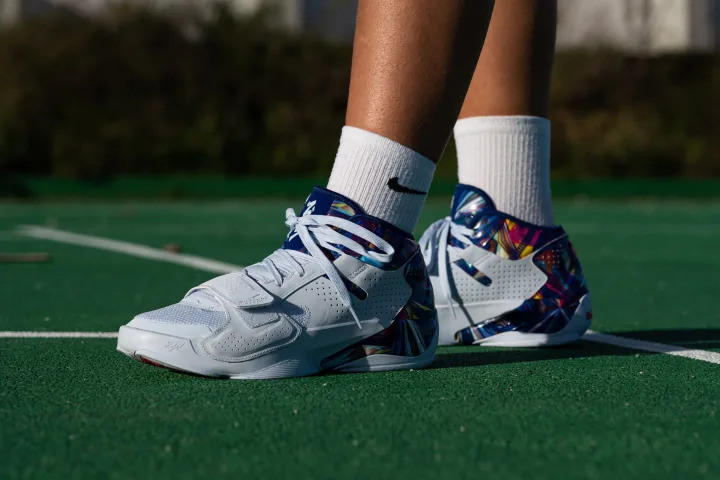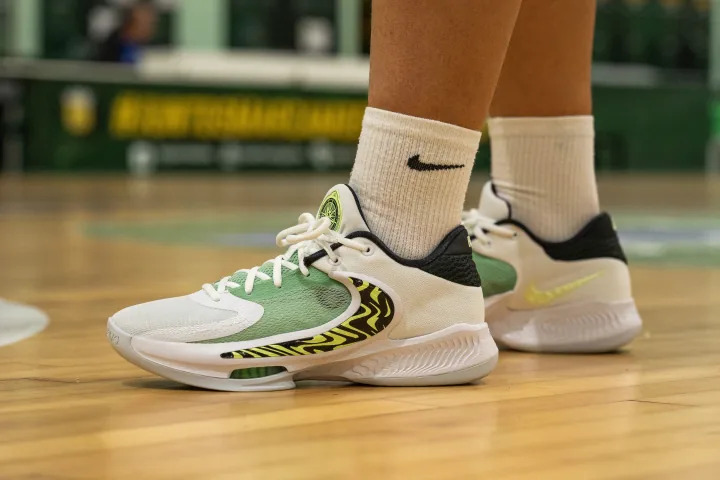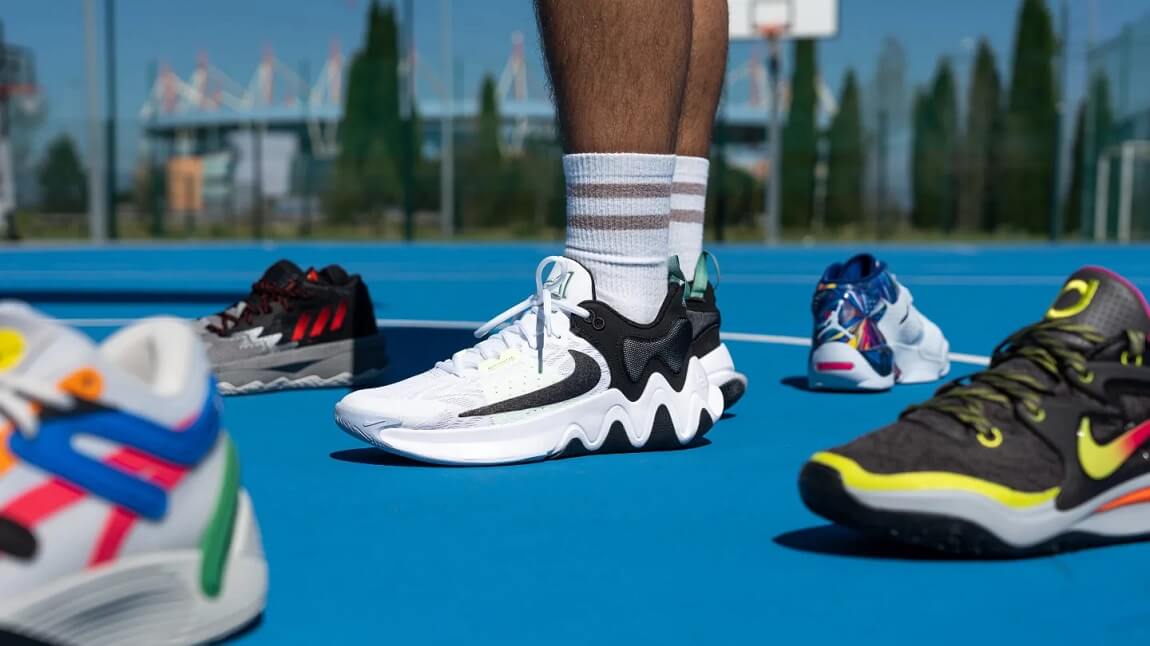Basketball involves running, jumping, quick stops, and abrupt direction changes. Regular trainers can help with some of these movements, but only the right basketball shoes can help with the rest.
Some shoes are ideal all-arounders, while others excel in a specific feature such as grip or cushioning. Don’t be overwhelmed; we’re here to help you make your decision. After thoroughly testing basketball shoes in our lab and on the court, we’ve selected the best images from various categories.
Quick List
- Nike Lebron NXXT GEN (best overall)
- Under Armour Curry Flow 10 (the best traction)
- Nike Lebron 20 (the best cushioning)
- Jordan Zion 2 (best support)
- Nike Zoom Freak 4 (best lightweight)
- Nike Air Max Impact 4 (best budget)
Best overall basketball shoes

Nike Lebron NXXT GEN
Reasons to buy:
- Top-notch traction
- Lightest LeBron shoe (as of 2024)
- Nice bounce in the forefoot
- A fine balance of court feel and impact protection
- Very comfortable wraparound feel Quality materials
Reasons to avoid:
- Surprisingly not for wide feet
- Still kinda expensive
You will totally enjoy wearing the LeBron NXXT GEN because it is surprisingly light for a LeBron shoe. It also delivers a good amount of bounce and is quite flexible. All these benefits convinced me that this is indeed the best pick of its time.
This LeBron shoe weighs only 13.12 ounces (372 grams), making it lighter than the average hoop shoe, which weighs 14.22 ounces (403 grams). The lighter weight will allow you to run faster and jump higher while competing for points on the court.
The Zoom Air unit in the forefoot did what it is supposed to do. Each step will feel 100% fueled as you ran past opponents and attempt to score. The Nike LeBron NXXT GEN will give you some of the most efficient runs ever.
It’s just too bad that the NXXT GEN is not suitable for players with wide feet. The toebox at the big toe is narrow, measuring only 74.9 mm when the average is 76.8.
Basketball shoes with the best traction

Under Armour Curry Flow 10
Reasons to buy:
- Fantastic traction on indoor courts
- Pronounced court feel
- A lot of spring back
- Flawless heel-to-toe transition
- Highly breathable upper
- Stylish design
Reasons to avoid:
- Not suitable for outdoor use
- So-so impact protection
When it comes to having an amazing bite on the court, nothing compares to the Under Armour Curry 10. Aside from excellent traction, I love this shoe’s outstanding breathability and lightweight design.
There is no compromise on comfort, and it has excellent breathability. Runrepeat carried out a test in which both smoke and light passed through the upper material without difficulty. Getting a perfect five-star rating.
This shoe weighs 12.63 oz (538g), which is significantly lighter than the average of 14.22 oz (403g). This lightness allows you to run faster and jump higher.
It’s too bad that this shoe isn’t suitable for people with wide feet. At its widest point, the toebox is only 97.5 mm wide. The average is as high as 101.0 mm.
Basketball shoes with the best cushioning

Nike Lebron 20
Reasons to buy:
- Great traction
- Tremendous impact protection
- Dependable bounciness
- Incredible foot containment
- Comfortable upper
- Stylishly streamlined looks
Reasons to avoid:
- Not for outdoors
When it comes to cushioning, the LeBron 20 stands out because it provides an effective balance of impact protection and ground feel, which is aided by its 4.4 mm drop. Furthermore, the shoe’s firm and stable base provides twist protection.
The midsole is slightly thinner than average, especially around the heel. The heel stack is only 27.0 mm high when the average could go as high as 30.0. Despite being thinner, the midsole still proves to be slightly softer. On the court, this much softness gives you just the right amount of impact protection.
The LeBron 20 has torsional rigidity. You dont have to worry about painful twists because the base is so firm.
It’s just unfortunate that there wasn’t much breathability. This shoe received a 2 out of 5 in smoke test by runrepeat, because the upper was found to be relatively impermeable.
Basketball shoes with the best support

Jordan Zion 2
Reasons to buy:
- Great traction
- Tremendous impact protection
- Dependable bounciness
- Incredible foot containment
- Comfortable upper
- Stylishly streamlined looks
Reasons to avoid:
- Not for outdoors
- Dust-prone outsole
- Lacks impact protection
The Jordan Zion 2 is the best shoe for foot containment because of its perfectly effective heel counter, incredibly secure structure, and twist-resistant base. All of these features work together to secure the foot in place.
The heel counter can withstand extreme pressure without fail. No amount of manual squeezing could make it lose its shape or secure clasp on the backfoot. It definitely deserves a 5 out of 5 for stiffness.
This shoe required 67.2N of force to bend at 90 degrees, which is quite amazing. A typical basketball shoe would only need 40.9 N to bend at the same angle. The rigidity of its overall structure reduced the possibility of slipping to zero.
Unfortunately, the Zion 2 will not appeal to players looking for something light. This shoe is heavier than the average, weighing 15.2 ounces (431 grams).
Best lightweight basketball shoes

Nike Zoom Freak 4
Reasons to buy:
- Great traction
- Tremendous impact protection
- Dependable bounciness
- Incredible foot containment
- Comfortable upper
- Stylishly streamlined looks
Reasons to avoid:
- Not for outdoors
- Dust-prone outsole
- Lacks impact protection
The Nike Zoom Freak 4 weighs 12.3 oz (348g), which is less than the average (13.7 oz or 387g), allowing you to be more agile and persist longer during games. Its outsole is actually harder than average, making it more durable against abrasion. The above-average hardness makes it a suitable outdoor shoe. Because of its stiff counter, this shoe also provides excellent heel support.
The Zoom Freak 4 requires 54.0N to bend at 90 degrees, making it more durable than the average shoe, which requires only 41.9N. Players who require shoes that accommodate natural foot flexions may be dissatisfied with this selection.
Best budget basketball shoes

Nike Air Max Impact 4
Reasons to buy:
- Traction is consistently good
- Responsive cushioning
- Decent impact protection
- Comfortable and well-ventilated upper
- Dependable foot containment
- Great for outdoor use
Reasons to avoid:
- Needs to be broken in
- Not for wide-footers
You can get the Air Max Impact 4 for $90 (the average price for Nike shoes is $134), and it will undoubtedly deliver much more than you pay for, providing the best value for money among all basketball shoes. The most notable feature is the durability of the outsole, which makes this shoe ideal for outdoor use.
The outsole of the Air Max Impact 4 is significantly harder than the average (87.5 vs. 80.3). This explained why the shoe works so well outdoors.
The cushion directly under the heel is quite thick (33.3 mm vs. 29.0 mm average). And it compressed well when needed, effectively relieving your feet of pain.
It’s just too bad that this shoe isn’t particularly accommodating to wide-footed individuals. Its actual width of 101.1 mm isn’t significantly larger than the 99.9 mm average

